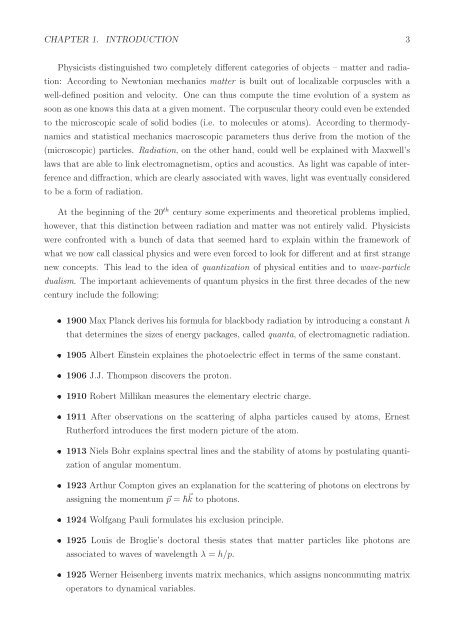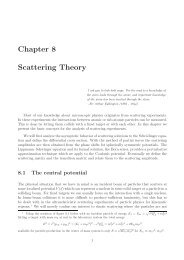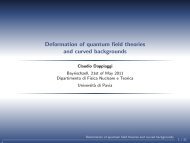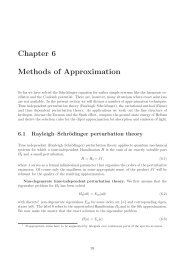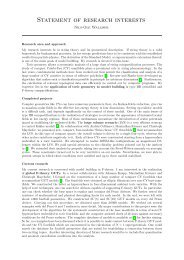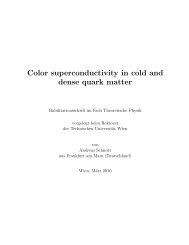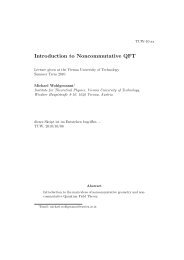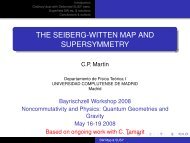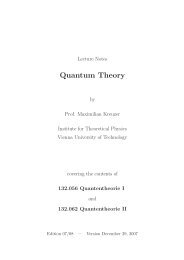Quantum Theory - Particle Physics Group
Quantum Theory - Particle Physics Group
Quantum Theory - Particle Physics Group
You also want an ePaper? Increase the reach of your titles
YUMPU automatically turns print PDFs into web optimized ePapers that Google loves.
CHAPTER 1. INTRODUCTION 3Physicists distinguished two completely different categories of objects – matter and radiation:According to Newtonian mechanics matter is built out of localizable corpuscles with awell-defined position and velocity. One can thus compute the time evolution of a system assoon as one knows this data at a given moment. The corpuscular theory could even be extendedto the microscopic scale of solid bodies (i.e. to molecules or atoms). According to thermodynamicsand statistical mechanics macroscopic parameters thus derive from the motion of the(microscopic) particles. Radiation, on the other hand, could well be explained with Maxwell’slaws that are able to link electromagnetism, optics and acoustics. As light was capable of interferenceand diffraction, which are clearly associated with waves, light was eventually consideredto be a form of radiation.At the beginning of the 20 th century some experiments and theoretical problems implied,however, that this distinction between radiation and matter was not entirely valid. Physicistswere confronted with a bunch of data that seemed hard to explain within the framework ofwhat we now call classical physics and were even forced to look for different and at first strangenew concepts. This lead to the idea of quantization of physical entities and to wave-particledualism. The important achievements of quantum physics in the first three decades of the newcentury include the following:1900 Max Planck derives his formula for blackbody radiation by introducing a constant hthat determines the sizes of energy packages, called quanta, of electromagnetic radiation.1905 Albert Einstein explaines the photoelectric effect in terms of the same constant.1906 J.J. Thompson discovers the proton.1910 Robert Millikan measures the elementary electric charge.1911 After observations on the scattering of alpha particles caused by atoms, ErnestRutherford introduces the first modern picture of the atom.1913 Niels Bohr explains spectral lines and the stability of atoms by postulating quantizationof angular momentum.1923 Arthur Compton gives an explanation for the scattering of photons on electrons byassigning the momentum ⃗p = ⃗ k to photons.1924 Wolfgang Pauli formulates his exclusion principle.1925 Louis de Broglie’s doctoral thesis states that matter particles like photons areassociated to waves of wavelength λ = h/p.1925 Werner Heisenberg invents matrix mechanics, which assigns noncommuting matrixoperators to dynamical variables.


